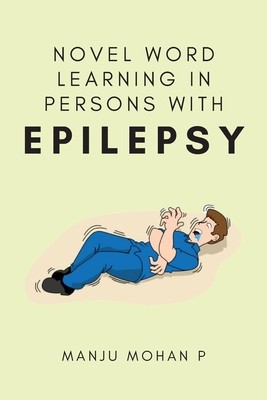
- We will send in 10–14 business days.
- Author: Manju Mohan P
- Publisher: independent Author
- ISBN-10: 5643884801
- ISBN-13: 9785643884804
- Format: 15.2 x 22.9 x 1.1 cm, minkšti viršeliai
- Language: English
- SAVE -10% with code: EXTRA
Reviews
Description
Language learning is a continuous process throughout one's lifespan and is vital for language development. Word learning which mediates language acquisition is a cognitive skill and is a special component of language that begins in childhood and continues to adulthood. Humans can learn new words with limited exposure at developmental and even adult stages. Word learning can bring about structural and functional changes in the brain in both younger and older individuals. Developmental literature on word learning had been the core area of research for many years, however, current research on adult language learning from the point of view of both first and second language acquisition is gearing up. Word learning involves multiple cognitive processes. When a novel word is learned, one has to acquire its phonological form and integrate its meaning into the existing semantic and lexical networks in the brain. This essentially employs the declarative memory systems. With multiple exposures and the passage of time from days, to weeks to months or years, the new word gets fully integrated into one's semantic network. In addition to this, language learning also involves syntactic, morphological, and pragmatic rules on how to use the newly acquired word. In the current study, novel word learning is conceived as associative learning between novel words and external referents and does not account for its true integration at a syntactic/ morphological level.
- Author: Manju Mohan P
- Publisher: independent Author
- ISBN-10: 5643884801
- ISBN-13: 9785643884804
- Format: 15.2 x 22.9 x 1.1 cm, minkšti viršeliai
- Language: English English
Language learning is a continuous process throughout one's lifespan and is vital for language development. Word learning which mediates language acquisition is a cognitive skill and is a special component of language that begins in childhood and continues to adulthood. Humans can learn new words with limited exposure at developmental and even adult stages. Word learning can bring about structural and functional changes in the brain in both younger and older individuals. Developmental literature on word learning had been the core area of research for many years, however, current research on adult language learning from the point of view of both first and second language acquisition is gearing up. Word learning involves multiple cognitive processes. When a novel word is learned, one has to acquire its phonological form and integrate its meaning into the existing semantic and lexical networks in the brain. This essentially employs the declarative memory systems. With multiple exposures and the passage of time from days, to weeks to months or years, the new word gets fully integrated into one's semantic network. In addition to this, language learning also involves syntactic, morphological, and pragmatic rules on how to use the newly acquired word. In the current study, novel word learning is conceived as associative learning between novel words and external referents and does not account for its true integration at a syntactic/ morphological level.


Reviews